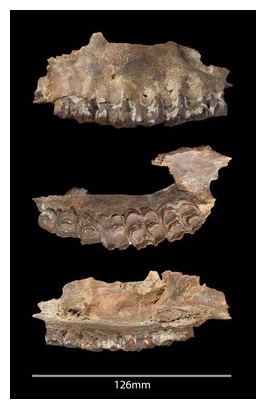
NASA’s simulated “Martian gardens” developed at Kennedy Space Centre and the Florida Tech Buzz Aldrin Space Institute are helping scientists to find out the best vegetable to grow during future manned mission to Red Planet.
The Martian soil is completely differently from Earth’s soil, which means growing crops/vegetables on Mars is much different and difficult compared to growing crops on Earth. The soil at Mars is made up of crushed volcanic rock and doesn’t contain any organic material.
“Soil, by definition, contains organics; it has held plant life, insects, worms. Mars doesn’t really have soil,” said Ralph Fritsche, the senior project manager for food production at Kennedy Space Center, in a news release.
“We are using advances in science to learn about increasing plant production to supplement astronauts’ diets,” said Trent Smith, project manager for the Vegetable Production System (Veggie) experiment at NASA’s Kennedy Space Centre.
NASA and Elon Musk are currently working on their plans to transport humans to Mars in next 10-12 years, and such space missions may present challenges when it comes to packing enough food on the spaceship for the astronauts to last the whole journey. To add on to their food supply, the astronauts may need to grow their own food in the form of vegetables/crops on the spaceship as well as the Red Planet once they land on the planet. The Veggie experiment was started to help the future astronauts in growing vegetables on the Red Planet.
Presently, the experiment allows astronauts to conduct experiments on plants on the International Space Station and learn more about how to grow vegetables in space.
According to NASA, the soil being used in the “Martian garden” was collected from Hawaii and simulates the Martian soil. The soil was used by researchers to find out which nutrients need to be added in Martian soil for optimal growth of different crops.
The experiments involved growing lettuce in three different types of soil: regular potting soil, simulated Martian soil with nutrients added, and simulated Martian soil with no nutrients added. The results revealed that the lettuce grown in the simulated soil with no added nutrients tasted the same, although it had slower germination rate and weaker roots.
NASA scientists are now planning to conduct similar experiments with Swiss chard, radishes, kale, tomatoes, Chinese cabbage, snow peas, and dwarf peppers.
In 2015, NASA astronauts, for the first time grew lettuce on the International Space Station. It took 33 days to grow the lettuce on the space station.
“Having lived on the space station for awhile, I understand the logistical complexity of having people live and work here for long periods and the supply chain that is required to keep us going,” American astronaut Scott Kelly had said at the time.
“If we’re ever going to go to Mars someday, we’re going to have to have a spacecraft that is more self-sustainable in regards to its food supply, as well as other things.”
NASA has been sending satellites, rovers, and landers to Mars for the past 40 years, and now plans to send humans on Mars by the 2030s, however, there are disagreements among NASA, the US Government and the Congress on this issue. Elon Musk’s SpaceX is also in the race to send manned missions to Mars.
Last week, Mr. Musk announced a plan to send a manned mission to the Red Planet by 2024.
